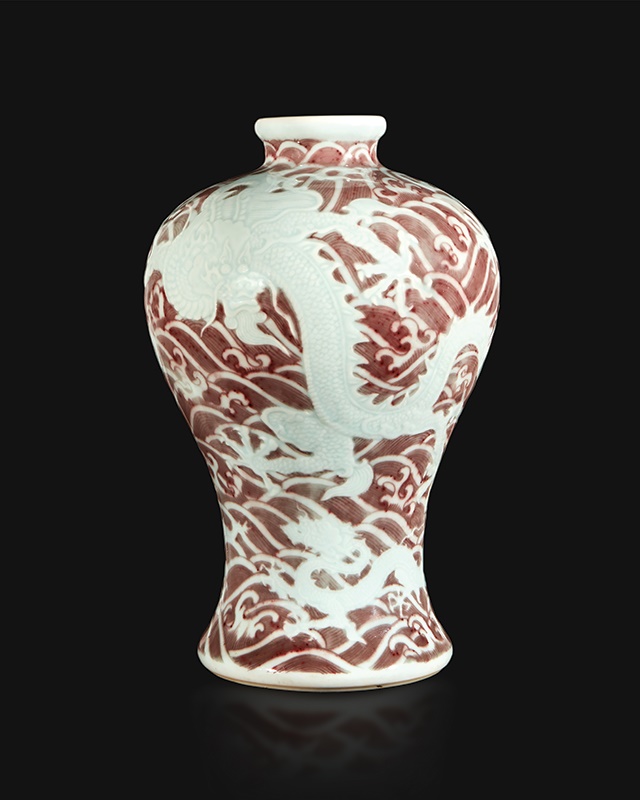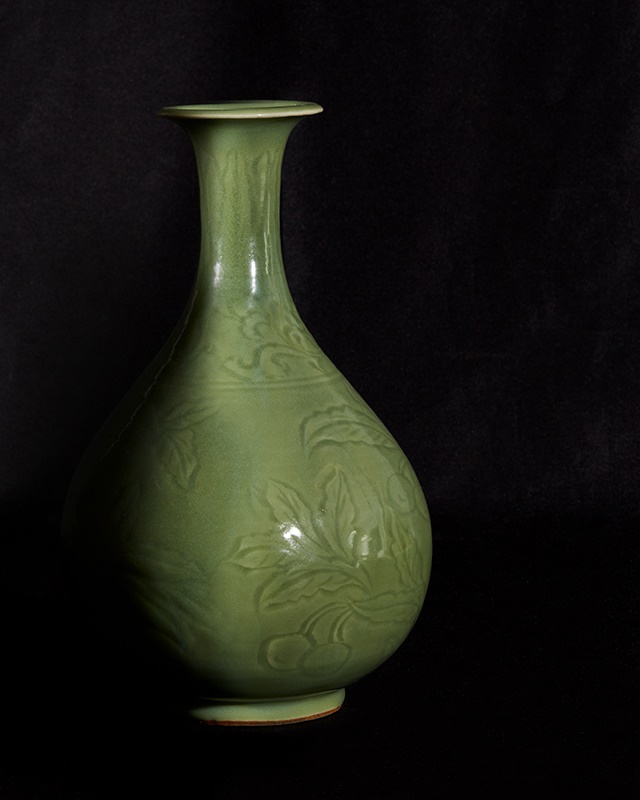Beauty and Symbolism
Chinese porcelains in our April 8 Asian Arts auction
Freeman's upcoming Asian Arts auction includes a selection of fine Chinese porcelains, including a rare Yongzheng 'Dragon and Waves' Meiping and a Longquan Celadon vase
04/08/2021 News and Film, Asian Arts
Update: Lot 21 sold for $2,316,000 in the April 8 auction, far surpassing its pre-sale estimate of $150,000 - $250,000. Learn more about the results of this impressive auction here.
A Chinese Underglaze Red and Blue-Decorated Carved Porcelain ‘Dragons and Waves’ Meiping, Yongzheng mark and of the period (1723-1735)

Yongzheng Meiping
The present vase is a rare example of a small group of wares made for the Yongzheng emperor, inspired by Yongle period (1402–1424) porcelain prototypes, themselves based on earlier Yuan styles of decoration, which feature reserved dragons carved in low relief against a ground of crashing waves executed in variations of underglaze blue and red.
There appear to be two closely related Yongzheng mark and period meiping types of which the present vase is a part: One version is slightly larger with more stylized crashing waves; the second group, to which the present vase belongs, appears to be more solidly potted and more closely aligned to the Yongle period prototypes. Such reconstructed meipings were excavated at the Imperial kiln sites at Dongmentou in 1994 and Zhushan in 1999 and 2003.
The theme of larger and smaller dragons has been related to the saying “Canlong jiaozi,” which may be translated as “the Eastern [Blue] dragon teaching his son.” This has been understood to imply both the importance of teaching the young and also to bringing one’s descendants up to succeed in court or higher office. This would certainly have been relevant for the Yongzheng Emperor who succeeded his illustrious father, the Kangxi Emperor, and in turn was to nurture the development of his own son, the Qianlong Emperor. These three Emperors collectively reigned over what may be described as a golden age for China and the Arts.
To be offered April 8
A Rare Chinese Incised Longquan Celadon Vase, Yuhuchun ping, Ming Dynasty, early 15th century
Longquan Celadon
The elegant potting and refinement of silhouette—together with the quality and style of the incised designs—strongly support this vessel’s inclusion among a body of works made for Chinese imperial use during the early 15th century reigns of the Yongle and Xuande emperors.
The motif of auspicious fruiting sprays, such as peaches, grapes, lychees, kumquats, pomegranates and loquats (also known as Chinese plums) often decorated Jingdezhen porcelains and Longquan celadons of this period. The rounded fruit borne on long curved stems with deeply ridged lanceolate leaves found on the present vase are likely to be loquats, which were rarely used as a main motif. Because it flowers in the autumn and winter and the fruit ripens in the spring, the loquat symbolizes endurance, overcoming adversity, and luck. The bright yellow color of the ripe fruit is also said to symbolize gold or wealth.
